I was tidying up bookshelves in my attic yesterday and discovered a few old issues of Zembla magazine. It only ran for eight issues between 2003 and 2005, but it was a unique and wonderful literary mag – big and glossy with sexy cover stars – closer to GQ and Vanity Fair than most of the dry literary journals I was aware of at the time.
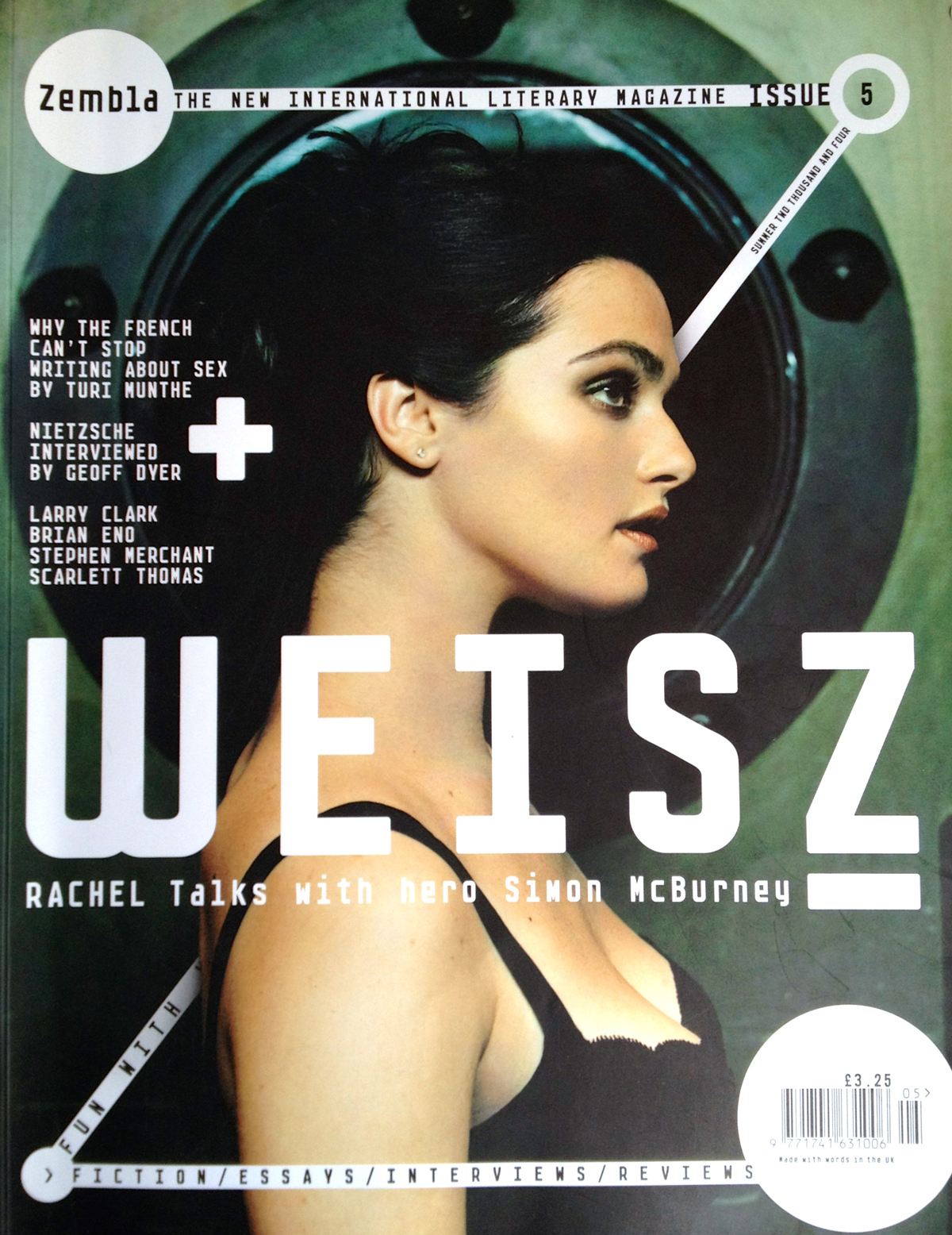
Zembla was subtitled ‘Fun with words’ and it was full of irreverence – a recipe for black-bear sausages, the ten commandments in Klingon, authors reviewing their own books. One issue even had Wes Anderson reviewing his own film The Life Aquatic with Steve Size.
The design was highly experimental, with whacky typographical layouts. It was a beautiful thing to behold, and a joy to flick through, each spread filled with the work of experimental sculptors, photographers, and literary textures – dust jackets, notebook pages, scribbles and masking tape.
Every issue had a writer interviewing a dead person: Michel Faber interviewing Marcel Duchamp, Rick Moody interviewing Jimi Hendrix, Geoff Dyer interviewing Nietzsche, Ian Rankin interviewing Arthur Conan Doyle.
If you wrote a letter and got it published in the magazine, they would send you a Zembla pencil. Each issue had a writing competition, too, with prizes including first editions of American Psycho, Lolita and Crash.
The advertising contributed massively to the Zembla style, with ads from designers and mega-brands such as Manolo Blahnik, Becks, Dior, Gucci and Diesel.
And of course there were brilliant short stories – the issues I found include a children’s story by Bruce Robinson, and short stories by Scarlett Thomas and Peter Hobbs.
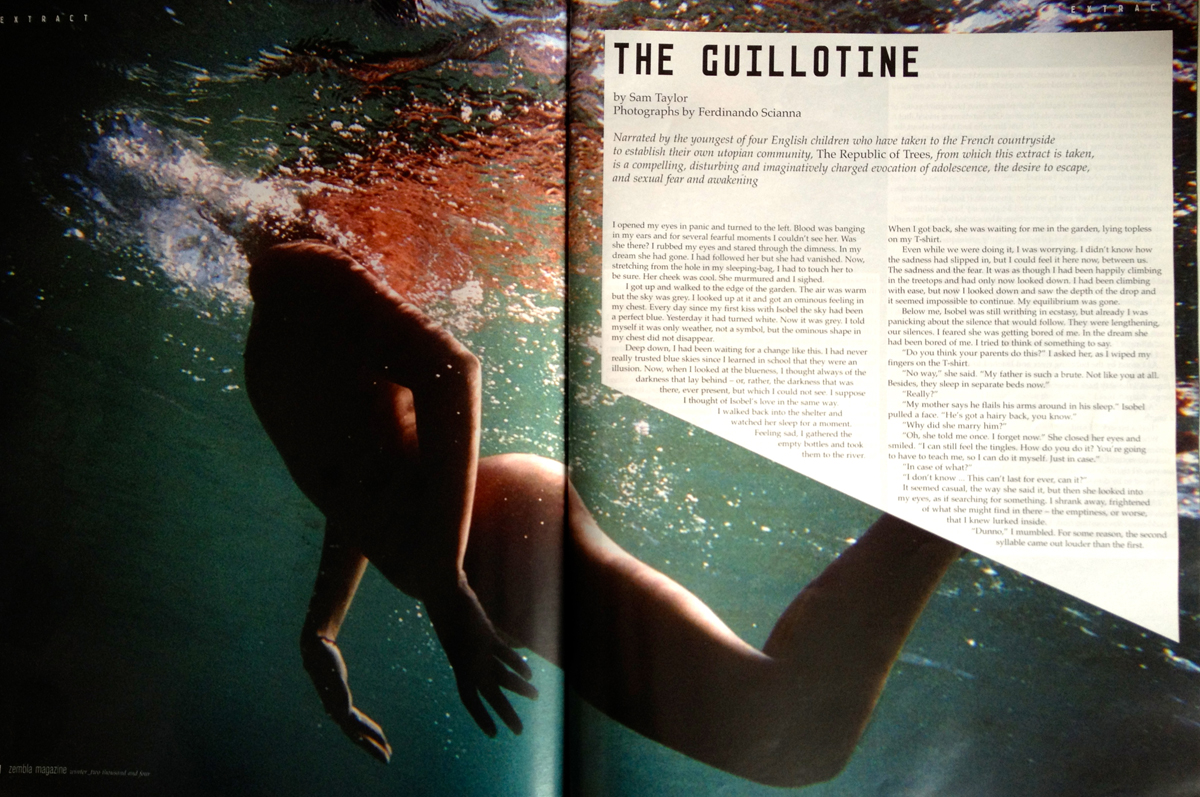
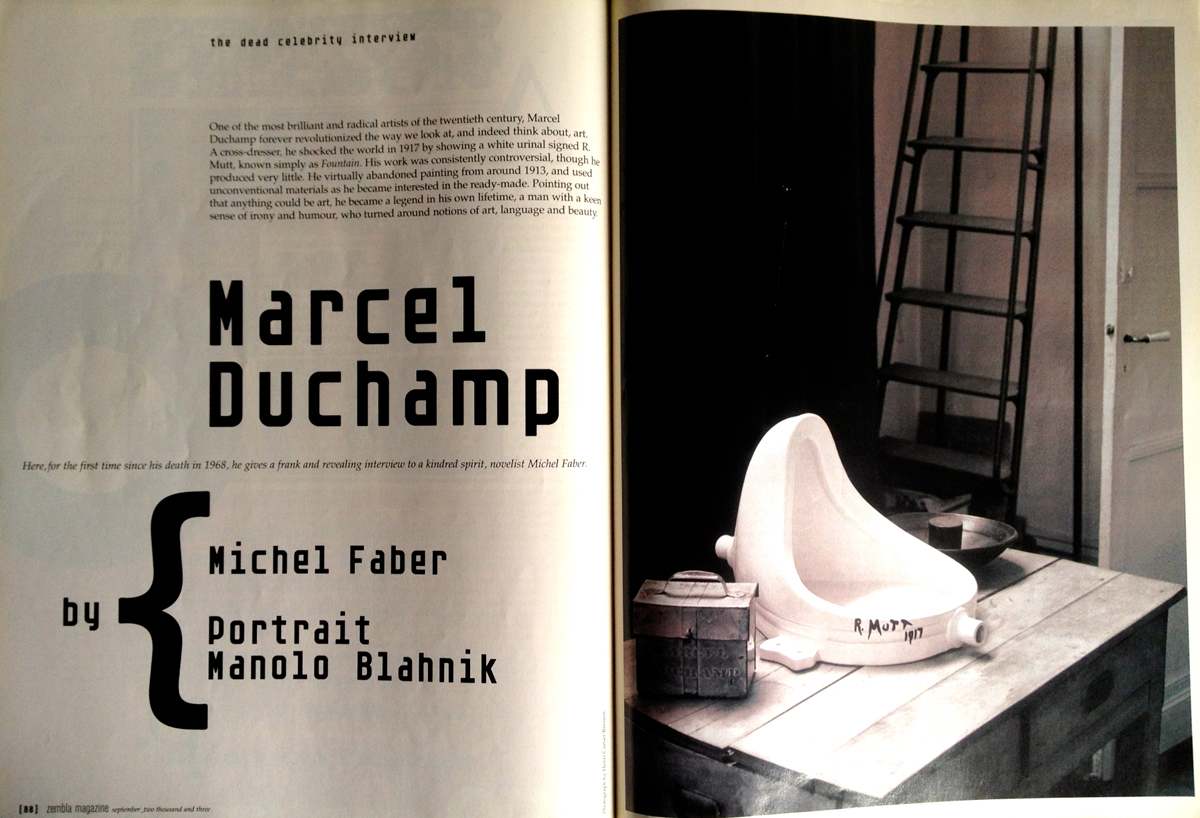
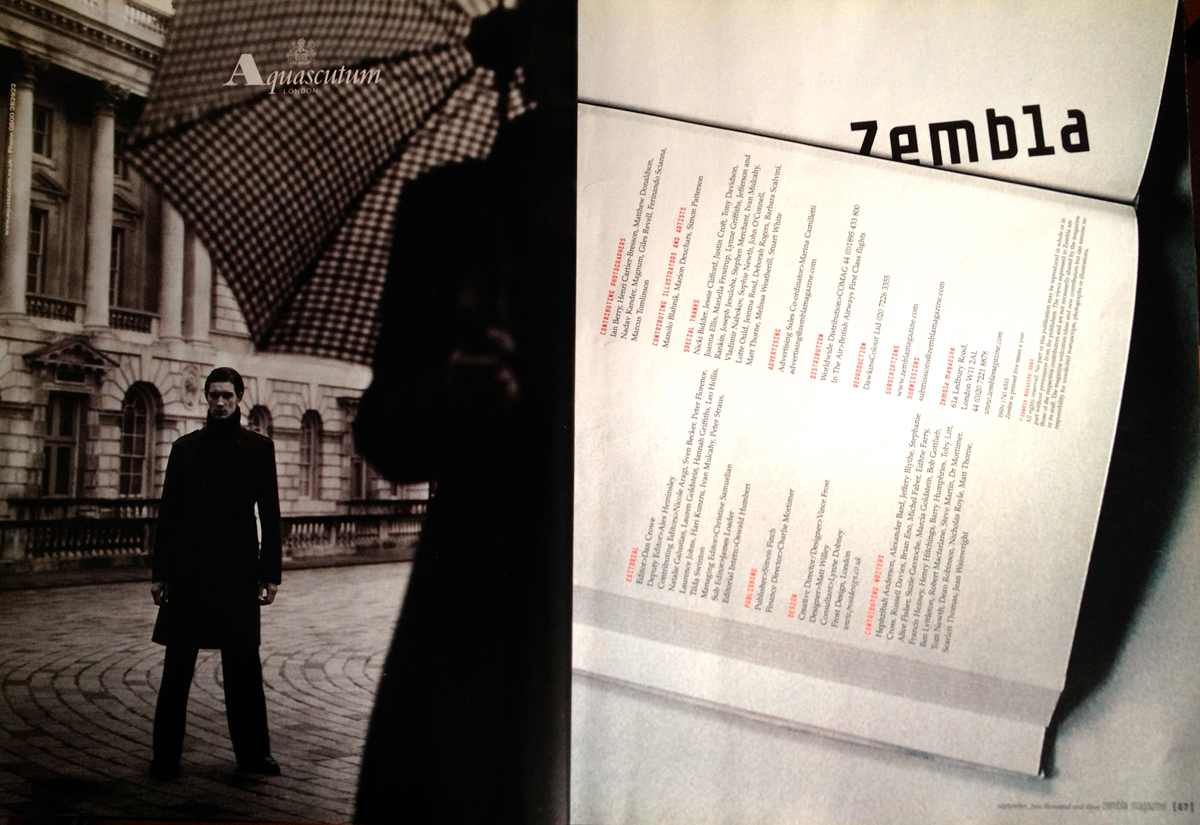

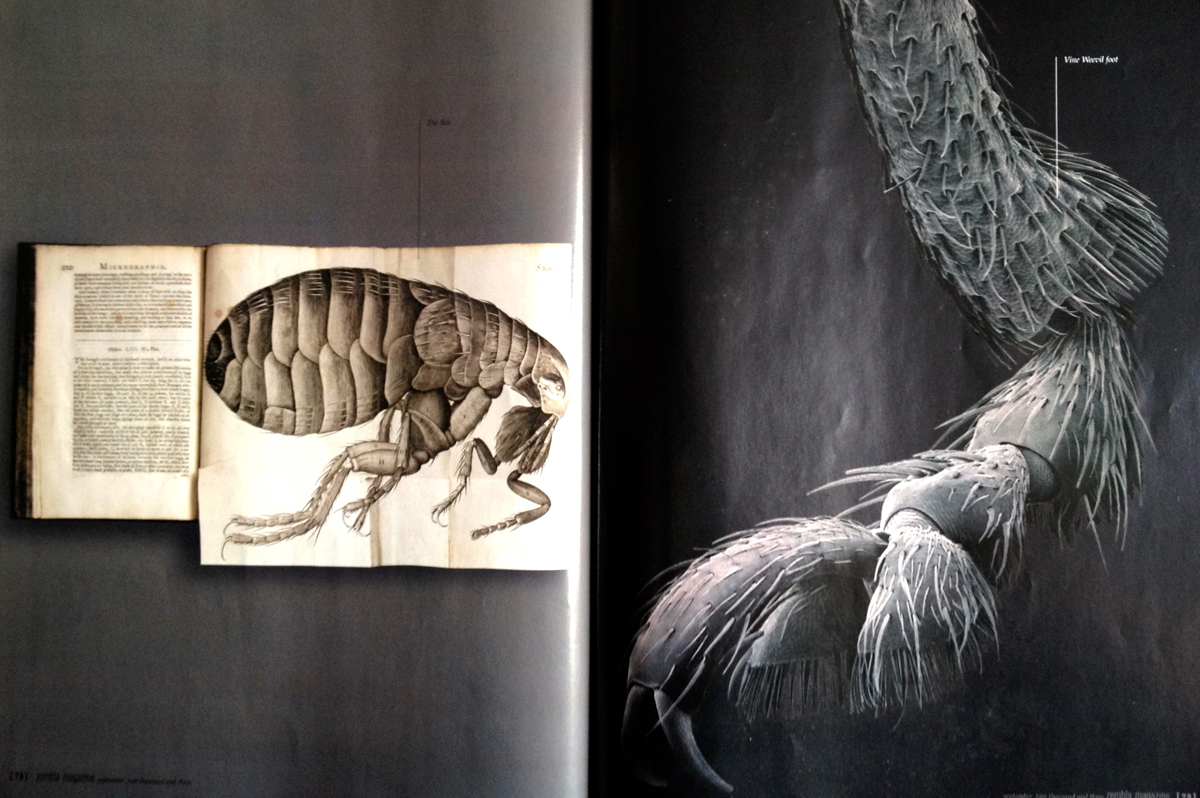
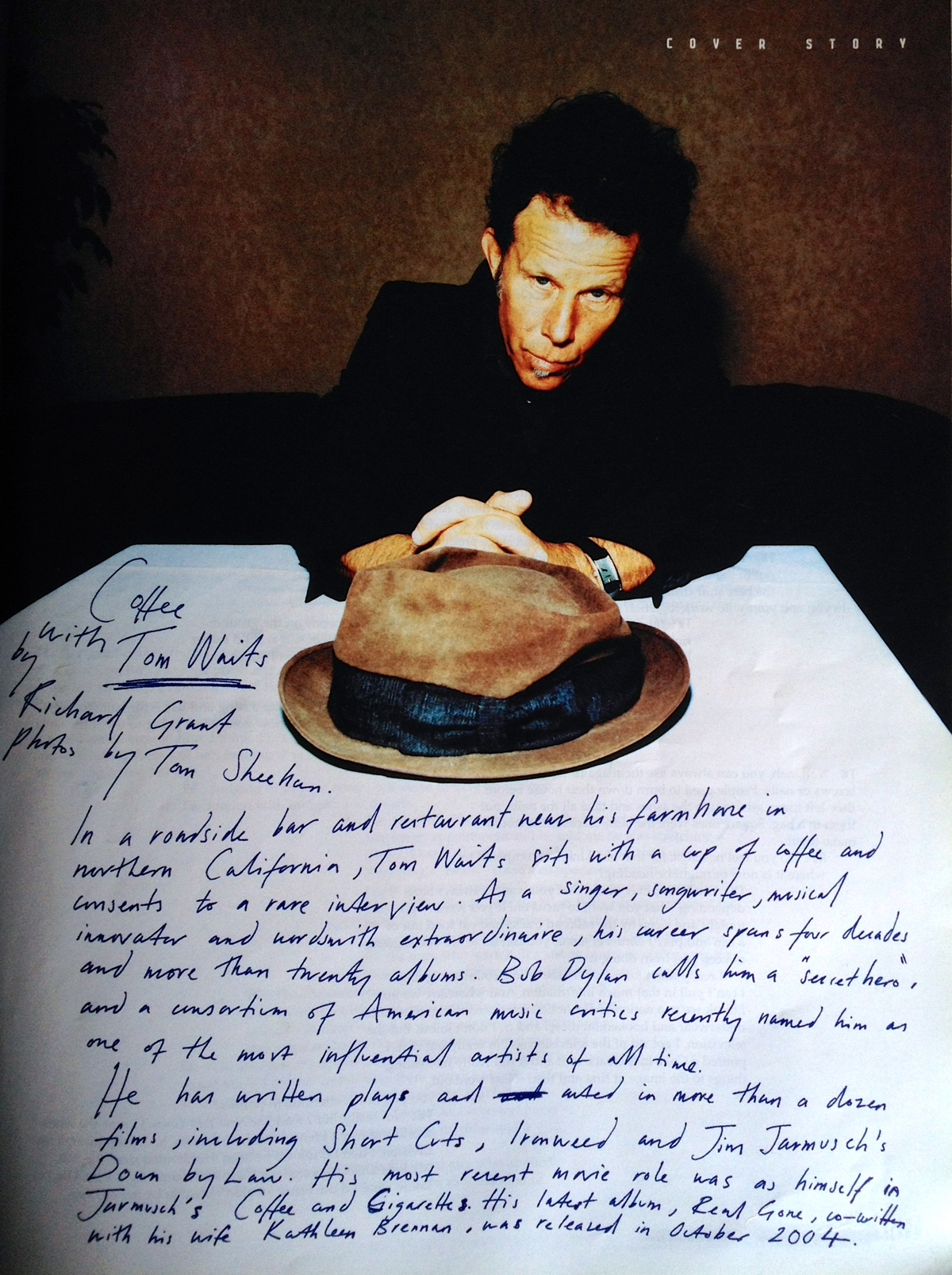
I think part of the reason I feel so nostalgic about Zembla is that I bought the first issue the day after I got my first story published – The 40-litre monkey in the Bridport Prize Anthology 2003. I didn’t ever submit anything to Zembla – I guess I felt a bit intimidated by all the heavyweights in the magazine (which also included Toby Litt, Brian Eno, Tilda Swinton, Rachel Weisz, AL Kennedy, Nicholas Royle, Ben Okri, Will Self and the like). But now, I wish I’d sent something in, even just a letter, because a Zembla pencil is a bit of literary history, and I would love to have one.
Have you got a fond memory of Zembla? Go back to the top of this post and share it by leaving a comment.
Links for more:
• 3am magazine interviewed Zembla editor Dan Crowe here.
• This Flickr page by Zembla design director Matt Willey has lots more Zembla spreads.
• Zembla publisher Simon Finch is custodian of Voewood House – home of the Voewood Festival.
• Zemba’s creative director was Vince Frost.
Yes, Zembla was great – gorgeous to look at and handle, and treating literature as cool, and writers as celebrities (which in such small doses does no harm). Sadly, I suspect it was those production values, the sheer glossiness, that made it unsustainable – we tried the same with Main Street Journal before Zembla appeared.
I did in fact have a story in Zembla (issue 4), for which I was – after reminders – paid. I would have settled for a Zembla pencil, though, if I had known.
Hi there David – yes it’s a real shame it burned so brightly for such a short time. I’ve not heard of Main Street Journal before – will look it up. And I’ll try and find my copy of Zembla 4 to check out your story – at the moment I’ve only found 1,5 and 7 in my attic. I think I had them all except the last issue.